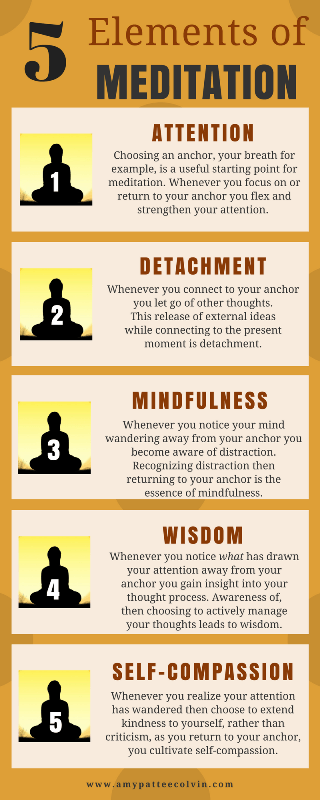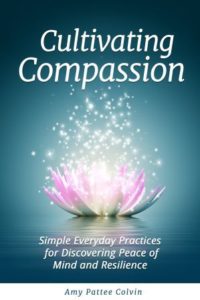Five Elements of Meditation (Infographic)
We have all heard about the benefits of eating healthfully, exercising regularly, sleeping well, spending quality time with loved ones.
Many of us are familiar with the concept of meditation but convince ourselves that we can’t do it.
We tell ourselves we don’t have time for it, or we don’t fully understand its impact on our daily life.
Follow this easy 5-part guide on how to meditate and watch yourself begin to thrive.
Current research shows that meditation is an excellent exercise for the brain. By deliberately and actively choosing where we place our attention, we begin building new neural pathways and networks.
Meditation for long periods at a time, 45 minutes or more, has value. But most of us don’t have the freedom to carve out that much time. Instead, committing to a short daily practice of 3-5 minutes is a great way to get started and create a sustainable habit.
Take a moment right now to try a simple mindful compassion meditation.
Read through the infographic, and then choose an anchor for yourself. Your anchor could be your breath, the center of your body, an image—real or imagined—that brings peace and calm. Anything can be the anchor for your attention. It is merely a place upon which to rest your attention.
(Click graphic for larger view.)
Settle yourself into a comfortable position then set a timer for three minutes.
All you need to do is:
- pay attention to your anchor
- detach from other thoughts
- be aware when your mind has wandered
- note where it has gone but don’t linger there
- then kindly bring yourself back to your anchor
Repeat this cycle as often as necessary within the three minutes.
The process seems pretty simple, doesn’t it? In fact, it may seem like you’re not really doing much of anything. But every aspect of this cycle strengthens your mind. You are practicing patience, and honing your ability to self-compassionately focus your mind and emotions. This, in turn, helps you deal more nimbly and resiliently with all of life’s challenges.
Now that you’ve explored some of the scientific benefits of compassion meditation, where do you go from here? Certainly creating a meditation practice on your own is one option. Using an app, Insight Timer, for example, is another option. Or you could work directly with a teacher.
If you’d like to create a regular practice, join me online from the comfort of your home every Monday morning from 7:15 – 7:45 PT for a free 30-minute online Compassion Meditation & Qigong Practice Group. We begin with standing qigong and end with a seated mudra meditation.
Or to really deepen your practice and learn how to integrate it into everyday life, join me for an International Spiritual Tour where we’ll spend 10-14 days practicing embodied mindfulness and compassion meditation, or sign up for a Cultivating Mindful Compassion course or Compassion Meditation Coaching.
Lastly, If I can be of any help or answer any questions, or if you’d simply like to discuss what program is the best fit for you, contact me to schedule a time to chat.





